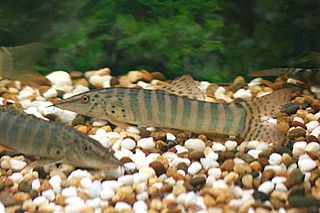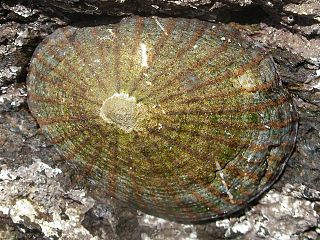
Mackerel is a common name applied to a number of different species of pelagic fish, mostly from the family Scombridae. They are found in both temperate and tropical seas, mostly living along the coast or offshore in the oceanic environment.

Herring are various species of forage fish, mostly belonging to the family of Clupeidae.

The International Union for Conservation of Nature (IUCN) Red List of Threatened Species, also known as the IUCN Red List or Red Data Book, founded in 1964, is an inventory of the global conservation status and extinction risk of biological species. A series of Regional Red Lists, which assess the risk of extinction to species within a political management unit, are also produced by countries and organizations.

The Chao Phraya River is the major river in Thailand, with its low alluvial plain forming the centre of the country. It flows through Bangkok and then into the Gulf of Thailand.

Sardine and pilchard are common names for various species of small, oily forage fish in the herring suborder Clupeoidei. The term 'sardine' was first used in English during the early 15th century; a somewhat dubious etymology says it comes from the Italian island of Sardinia, around which sardines were once supposedly abundant.

Sprat is the common name applied to a group of forage fish belonging to the genus Sprattus in the family Clupeidae. The term also is applied to a number of other small sprat-like forage fish. Like most forage fishes, sprats are highly active, small, oily fish. They travel in large schools with other fish and swim continuously throughout the day.

The dwarf loach, ladderback loach, pygmy loach, chain loach or chain botia is a freshwater fish belonging to the family Botiidae. Formerly included in the genus Yasuhikotakia, it is frequently seen in the aquarium trade, the product of captive breeding.

Yasuhikotakia is a genus of botiid loaches, many which are popular aquarium fish. It is named in honor of Japanese collector/researcher Dr. Yasuhiko Taki. This genus has been separated from the genus Botia in the paper by Maurice Kottelat in 2004.

Humerana lateralis is a species of frog in the family Ranidae. It is found in Cambodia, Laos, Myanmar, Thailand, and Vietnam. It is commonly known as Kokarit frog, yellow frog or (ambiguously) wood frog.

The black-banded owl is a species of owl in the family Strigidae. Entirely nocturnal, this midsized black and white neotropical bird is a resident species, and therefore never migrates out of its native South America. Its natural habitats are varied subtropical or tropical forests ranging from lowlands to areas of medium altitude, and it has been found in Argentina, Bolivia, Brazil, Colombia, Ecuador, French Guiana, Guyana, Paraguay, Peru, Suriname, and Venezuela.

The black-and-white owl is a species of owl in the family Strigidae.

The chestnut-crowned antpitta is a species of bird in the family Grallariidae. It is found in Colombia, Ecuador, Peru, and Venezuela.
Oreoglanis siamensis, the Siamese bat catfish, is a species of sisorid catfish in the Sisoridae endemic to Thailand where it is found in the Chao Phraya and Mekong River basins. This species grows to a length of 14.0 centimetres (5.5 in) SL. It lives only in streams of 1,200 meters above sea level.

Botiidae, the pointface loaches, is a family of cypriniform ray-finned fishes from South, Southeast, and East Asia. Until recently they were placed in the true loach family Cobitidae, until Maurice Kottelat revised the loaches and re-elevated this taxon to family rank in 2012. The family includes about 56 species.

Cellana nigrolineata is a species of sea snails or limpets, marine gastropod molluscs in the family Nacellidae, one of the families of true limpets.

Trigonostigma somphongsi is a species of ray-finned fish in the genus Trigonostigma. It is endemic to Thailand. It is threatened by habitat loss.

Hypselodoris nigrolineata is a species of colourful sea slug or dorid nudibranch, a marine gastropod mollusk in the family Chromodorididae.

Ambastaia is a genus of botiid loaches native to Mainland Southeast Asia and China. The species in this genus were formerly included in Yasuhikotakia.

Endangered species, as classified by the International Union for Conservation of Nature (IUCN), are species which have been categorized as very likely to become extinct in their known native ranges in the near future. On the IUCN Red List, endangered is the second-most severe conservation status for wild populations in the IUCN's schema after critically endangered. In 2012, the IUCN Red List featured 3,079 animal and 2,655 plant species as endangered worldwide. The figures for 1998 were 1,102 and 1,197 respectively.


















